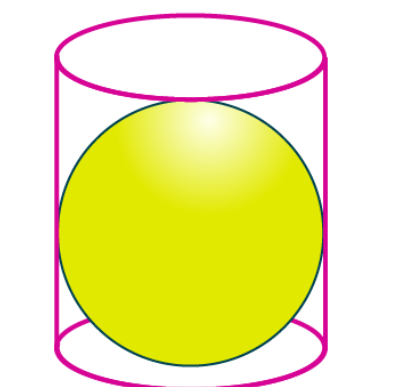
(i)Given radius of the cylinder, r = 3.5 cm
Diameter of the sphere = height of the cylinder
= 3.5×2
= 7 cm
So radius of sphere, r = 7/2 = 3.5 cm
Height of cylinder, h = 7 cm
Total surface area of can in contact with water = curved surface area of cylinder+base area of cylinder.
= 2rh+r2
= r(2h+r)
= 22/7)×3.5×(2×7+3.5)
= (22/7)×3.5×(14+3.5)
= 11×17.5
= 192.5 cm2
Hence the surface area of can in contact with water is 192.5 cm2.
(ii)Let the depth of the water before the sphere was put be d.
Volume of cylindrical can = volume of sphere+ volume of water
r2h = (4/3)r3+r2d
r2h = r2{(4/3)r +d)}
h = (4/3)r +d
d = h – (4/3)r
d = 7 – (4/3)×3.5
d = (21-14)/3
d = 7/3
Hence the depth of the water before the sphere was put into the can is 7/3 cm.
